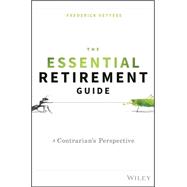Retirement planning is difficult enough without having to contend with misinformation. Unfortunately, much of the advice that is dispensed is either unsubstantiated or betrays a strong vested interest. In The Essential Retirement Guide, Frederick Vettese analyses the most fundamental questions of retirement planning and offers some startling insights. The book finds, for example that:
- Saving 10 percent a year is not a bad rule of thumb if you could follow it, but there will be times when you cannot do so and it might not even be advisable to try.
- Most people never spend more than 50 percent of their gross income on themselves before retirement; hence their retirement income target is usually much less than 70 percent.
- Interest rates will almost certainly stay low for the next 20 years, which will affect how much you need to save.
- Even in this low-interest environment, you can withdraw 5 percent or more of your retirement savings each year in retirement without running out of money.
- Your spending in retirement will almost certainly decline at a certain age so you may not need to save quite as much as you think.
- As people reach the later stages of retirement, they become less capable of managing their finances, even though they grow more confident of their ability to do so! Plan for this before it is too late.
- Annuities have become very expensive, but they still make sense for a host of reasons.
In addition, The Essential Retirement Guide shows how you can estimate your own lifespan and helps you to understand the financial implications of long-term care. Most importantly, it reveals how you can calculate your personal wealth target - the amount of money you will need by the time you retire to live comfortably. The author uses his actuarial expertise to substantiate his findings but does so in a jargon-free way.








